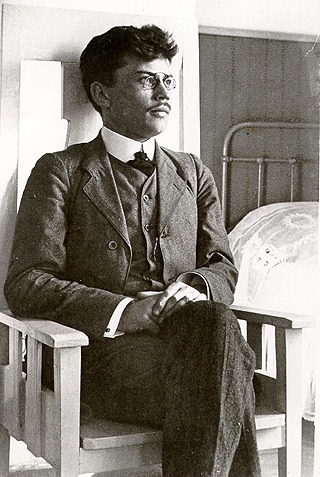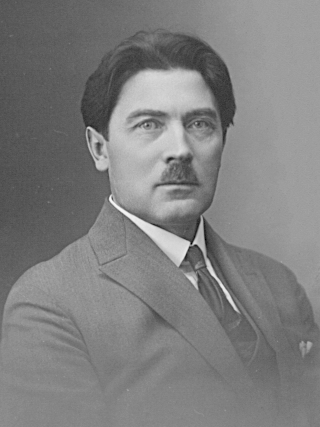|
Noor Eesti
Young Estonia () was a neo-romantic literary group established around 1905 and led by the poet Gustav Suits and short story writer Friedebert Tuglas. Other members of the group included Villem Grünthal-Ridala and Johannes Aavik. Gustav Suits articulated the ideology of the group thus: "What buoys up and exalts humanity is education. Our slogan is: More culture! More European culture! Let us remain Estonians, but let us become Europeans too. We want to discover the ideas and forms towards which we are impelled by our national spirit, character, and needs on the one hand, and by European culture on the other."''W. K. Matthews, "The Background and Poetry of Gustav Suits. A Study in Estonian Symbolism", ''American Slavic and East European Review'', Vol. 9, No. 2. (April 1950), page 118. The group's aesthetic programme followed the trends of Finnish, French, German, Scandinavian and Italian literature of the time, comprising elements of Impressionism, Symbolism Symbolism or symbolis ... [...More Info...] [...Related Items...] OR: [Wikipedia] [Google] [Baidu] |
Gustav Suits
Gustav Suits ( in Võnnu, Tartu County, Livonia – 23 May 1956 in Stockholm, Sweden) is considered one of the greatest Estonian poets.W. K. Matthews, ''The Background and Poetry of Gustav Suits. A Study in Estonian Symbolism'', American Slavic and East European Review, Vol. 9, No. 2. (Apr., 1950), pp. 116–127. He was also an early leader of the literary movement group Noor-Eesti (Young Estonia). Childhood and education Suits was born in the parish of Võnnu to teacher Hindrik Suits and Liis Suits (née Kerge). He had an older sister, Ann. In 1895, Suits moved to Tartu, Estonia to study at the Alexander Gymnasium. Suits so enjoyed this bustling university town and its intellectual centers that he became determined to become a part of its literary society. By the time he was 16 years old, the newspaper ''Uus Aeg'' (''New Time'') published his first critical essay. In 1899, the newspaper published his first poem, ''Water Lilies''. Literary career In 1901, Suits began spending ... [...More Info...] [...Related Items...] OR: [Wikipedia] [Google] [Baidu] |
Friedebert Tuglas
Friedebert Tuglas, born Friedebert Mihkelson or Michelson (2 March 1886 – 15 April 1971) was an Estonian writer and critic who introduced Impressionism and Symbolism to Estonian literature. at Encyclopædia Britannica Persecuted by the authorities in the beginning of 20th century, he later became an acknowledged representative of Estonian literature in the . Biography Tuglas was born in , the son of a carpenter, and studied at the |
Villem Grünthal-Ridala
Villem Grünthal-Ridala, born Grünthal-Wilhelm (30 May 1885 in Kuivastu, Muhu, Kreis Ösel, Governorate of Livonia - 16 January 1942 in Helsinki, Finland) was an Estonian poet, translator, linguist and folklorist.Toivo Miljan, ''Historical Dictionary of Estonia'', Scarecrow Press 2004 Life Villem Grünthal-Ridala was the son of an inn keeper on the island of Muhu. He first attended Hellamaa (Pühalepa) parish school, then Eisenschmidt private school, as well as the national high school of Kuressaare. Beginning in 1905, he studied Finnish Literature at the University of Helsinki. In 1911 he completed his doctorate. From 1910 to 1919 Grünthal-Ridala was a professor at the University of Tartu in Estonia. From 1910 until 1914 he edited ''Estonian Literature'' magazine (Eesti Kirjandus), as well as ''Üliõpilaste leht'' from 1914 to 1916. From 1923 until his death, Grünthal-Ridala was professor of Estonian Language and Literature at the University of Helsinki. In 1941 he receiv ... [...More Info...] [...Related Items...] OR: [Wikipedia] [Google] [Baidu] |
Johannes Aavik
Johannes Aavik ( in Randvere, Saaremaa, Estonia (then Russian Empire) – 18 March 1973 in Stockholm, Sweden) was an Estonian philologist and Fennophile who played a significant role in the modernization and development of the Estonian language.Toivo Miljan, ''Historical Dictionary of Estonia'', Scarecrow Press 2004 Education and career Aavik studied history at the University of Tartu and the University of Nezin in 1905. He was a member of the Young Estonia movement and obtained a Doctorate in Romance languages at the University of Helsinki in 1910. Aavik taught Estonian and French at Tartu University between 1926 and 1933. In 1934 he was appointed by the Estonian Ministry of Education as Chief Inspector of Secondary Schools, a position he held until 1940.'' The International Who's Who 1943-44''. 8th edition. George Allen & Unwin, London, 1943, p. 1. He fled Soviet occupation in 1944 and lived in Stockholm for the remainder of his life. Estonian language development Johannes ... [...More Info...] [...Related Items...] OR: [Wikipedia] [Google] [Baidu] |
Impressionism
Impressionism was a 19th-century art movement characterized by relatively small, thin, yet visible brush strokes, open Composition (visual arts), composition, emphasis on accurate depiction of light in its changing qualities (often accentuating the effects of the passage of time), ordinary subject matter, unusual visual angles, and inclusion of movement as a crucial element of human perception and experience. Impressionism originated with a group of Paris-based artists whose independent exhibitions brought them to prominence during the 1870s and 1880s. The Impressionists faced harsh opposition from the conventional art community in France. The name of the style derives from the title of a Claude Monet work, ''Impression, soleil levant'' (''Impression, Sunrise''), which provoked the critic Louis Leroy to coin the term in a Satire, satirical review published in the Parisian newspaper ''Le Charivari''. The development of Impressionism in the visual arts was soon followed by analogo ... [...More Info...] [...Related Items...] OR: [Wikipedia] [Google] [Baidu] |
Symbolism (arts)
Symbolism was a late 19th-century art movement of French art, French and Art of Belgium, Belgian origin in poetry and other arts seeking to represent absolute truths symbolically through language and metaphorical images, mainly as a reaction against Naturalism (literature), naturalism and Realism (arts), realism. In literature, the style originates with the 1857 publication of Charles Baudelaire's ''Les Fleurs du mal''. The works of Edgar Allan Poe, which Baudelaire admired greatly and translated into French, were a significant influence and the source of many stock Trope (literature), tropes and images. The aesthetic was developed by Stéphane Mallarmé and Paul Verlaine during the 1860s and 1870s. In the 1880s, the aesthetic was articulated by a series of manifestos and attracted a generation of writers. The term "symbolist" was first applied by the critic Jean Moréas, who invented the term to distinguish the Symbolists from the related decadent movement, Decadents of literat ... [...More Info...] [...Related Items...] OR: [Wikipedia] [Google] [Baidu] |
Expressionism
Expressionism is a modernist movement, initially in poetry and painting, originating in Northern Europe around the beginning of the 20th century. Its typical trait is to present the world solely from a subjective perspective, distorting it radically for emotional effect in order to evoke moods or ideas. Expressionist artists have sought to express the meaningVictorino Tejera, 1966, pages 85,140, Art and Human Intelligence, Vision Press Limited, London of emotional experience rather than physical reality. Expressionism developed as an avant-garde style before the First World War. It remained popular during the Weimar Republic,Bruce Thompson, University of California, Santa Cruzlecture on Weimar culture/Kafka'a Prague particularly in Berlin. The style extended to a wide range of the arts, including expressionist architecture, painting, literature, theatre, dance, film and music. The term is sometimes suggestive of angst. In a historical sense, much older painters such as Matthia ... [...More Info...] [...Related Items...] OR: [Wikipedia] [Google] [Baidu] |
1917 Russian Revolution
The Russian Revolution was a period of political and social revolution that took place in the former Russian Empire which began during the First World War. This period saw Russia abolish its monarchy and adopt a socialist form of government following two successive revolutions and a bloody civil war. The Russian Revolution can also be seen as the precursor for the other European revolutions that occurred during or in the aftermath of WWI, such as the German Revolution of 1918. The Russian Revolution was inaugurated with the February Revolution in 1917. This first revolt focused in and around the then-capital Petrograd (now Saint Petersburg). After major military losses during the war, the Russian Army had begun to mutiny. Army leaders and high ranking officials were convinced that if Tsar Nicholas II abdicated, the domestic unrest would subside. Nicholas agreed and stepped down, ushering in a new government led by the Russian Duma (parliament) which became the Russian Provis ... [...More Info...] [...Related Items...] OR: [Wikipedia] [Google] [Baidu] |
Estonian Literature
Estonian literature ( et, eesti kirjandus) is literature written in the Estonian language (c. 1,100,000 speakers) The domination of Estonia after the Northern Crusades, from the 13th century to 1918 by Germany, Sweden, and Russia resulted in few early written literary works in the Estonian language. The oldest records of written Estonian date from the 13th century. ''Originates Livoniae'' in Chronicle of Henry of Livonia contains Estonian place names, words and fragments of sentences. The ''Liber Census Daniae'' (1241) contains Estonian place and family names.The Development of Written Estonian by George Kurman The earliest extant samples of connected Estonian are the so-called Kullamaa prayers dating from 1524 and 1528. The first known printed book is a bilingual German-Estonian translation of ... [...More Info...] [...Related Items...] OR: [Wikipedia] [Google] [Baidu] |








